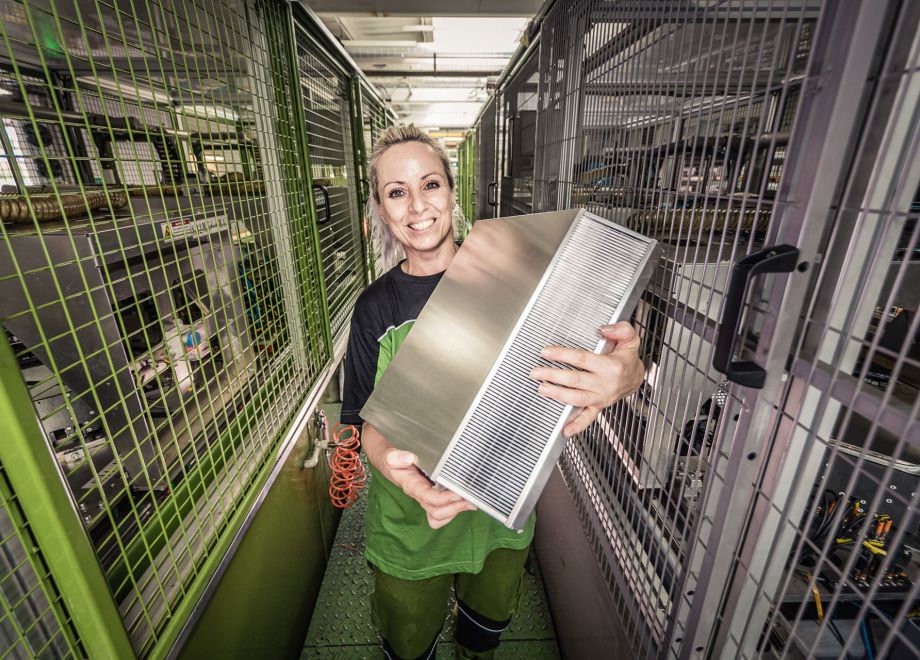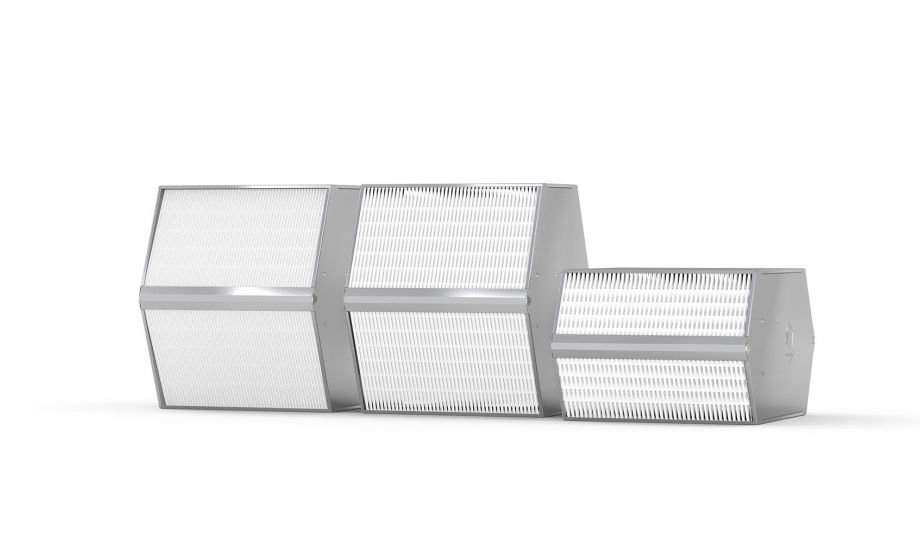- Home
- Products
- Technology
- How a heat exchanger works
- Enthalpy Counter-Flow Exchanger
- Counterflow vs. crossflow heat exchangers
- Why leakage matters
- Aluminium vs. plastic heat exchanger
- Optimal heat exchanger parameters
- Installation of a heat exchanger
- Cooling and enthalpy exchanger
- Test of enthalpy membranes
- Modern production technologies
- Production Automation and Industry 4.0
- Quality and control
- Support
- About us
- Contacts
- EN
Counterflow vs. crossflow heat exchangers
What do you need to know about recovery plate heat exchangers? On January 1, 2018, EU Directive No. 1253 entered into force, increasing the requirements for the minimum heat efficiency of plate heat exchangers to 73% (previously 67%). The SFP value must also correspond to a pressure drop of 340 Pa. This value is also stricter than the 480 Pa of the preceding standard (EN13053, 2017).

Crossflow heat exchangers have difficulties achieving these values, especially with flow rates of 1,000 to 4,000 m3/h. This problem can be easily solved by counterflow heat exchangers.
If the same plate distance is used, a counterflow heat exchanger can be substantially smaller than the crossflow equivalent. Considering the values of the permitted pressure drop, this means that the side of a crossflow heat exchanger must be at least 800 mm in length. Such solution corresponds to a flow rate of approx. 3,500 m3/h.

Counterflow heat exchanger
The counterflow heat exchanger has two zones where heat transfer occurs. A crossflow zone (triangular parts) where air flows identically as it does in a crossflow heat exchanger, and a counterflow zone (rectangular parts) with genuine counterflow.
In the counterflow part of the counterflow heat exchanger is where the miracle of high efficiency happens. The longer the counterflow part, the greater the efficiency. The plate shape in the counterflow zone is designed to maximize the heat-transfer area because this part of the heat exchanger contributes up to 70% towards its overall efficiency. It is also appropriate to use a certain wave overlapping, so that plates can better resist pressure differences. The task of the crossflow zone is to bring the air to the counterflow zone as fast as possible, together with the least possible pressure drop.
We are often asked why the heat-transfer area is not increased by also putting additional waves in the crossflow zone. The reason is that the air speed at the heat exchanger supply is high, whereas its speed at the exhaust is low. Thus such waves would only have a negligible effect on efficiency, whereas, on the other hand, the pressure drop would sharply increase due to high air speed and turbulence.
Therefore it is obvious that the crossflow part should be completely smooth. But this solution is not perfect either, because air must also be directed to the heat exchanger’s peripheries. Plate stiffness is similarly vital. If it were completely smooth, it would suffer from high pressure differences in the heat exchanger zone, inflating the supply part while closing the exhaust part. This would all be followed by a dramatic increase in pressure drop. See the illustration with the speed outlines.

Advantages and main applications of counterflow heat exchangers
The counterflow heat exchanger is unrivalled if used alongside recovery units with flow rates up to 5,000 m3/h, and comes into its own with flow rates up to 10,000 m3/h.
Counterflow heat exchanger advantages
- High efficiency of up to 92%
- Compact dimensions, resulting in smaller and cheaper recovery units
- 1.5 times smaller than a comparable crossflow heat exchanger
- Wide range (aluminium, plastic)
Advantages and main applications of crossflow heat exchangers
The main applications for crossflow heat exchangers are flow rates above 10,000 m3/h.
Crossflow heat exchanger advantages
Easier installation, especially in large units
Lower price for the actual heat exchanger
Easier air supply and exhaust solution

Which heat exchanger type to choose?
In our opinion, the future belongs to counterflow heat exchangers, especially in recovery units with flow rates up to 5,000 m3/h.
Constantly increasing energy costs means that efficiency is essential. With higher efficiency and greater savings in heat energy, we show respect to the environment.
The former disadvantages of counterflow heat exchangers, e.g. their price, are decreasing over time due to the optimization of their production process. Counterflow heat exchangers can also be used for higher flow rates as a part of COMBI solutions.
By sending the form, you subscribe to our newsletter and agree to the terms of the Personal Data Protection. You can cancel your subscription any time.
RECUTECH s.r.o.
Fáblovka 592
533 52 Pardubice
T: +420 467 070 245
E:
© 2025 RECUTECH s.r.o., all rights reserved. Webdesign by IDENTITY s.r.o.
Personal Data Protection | Website Information | Site Map
